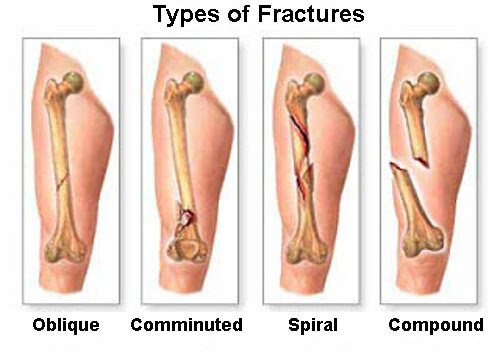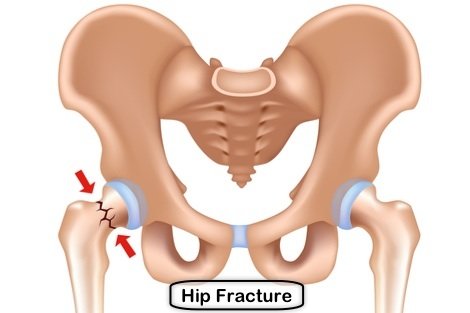
Types of Bone Fractures
April 15, 2024
The importance of the bones in the body cannot be overstated.
Apart from serving as attachment points for muscles (making movements like sitting, kneeling, lifting, running, and jumping possible), the bones also serve as protection for the organs.
However, when a force is exerted upon the bones (read: a fall or a blow), it might not be able to withstand the trauma and will eventually break. The loss of integrity will oftentimes result to bone fractures.
In some instances, bone fractures are not attributed to falls or blows alone. In the case of people with osteoporosis for example, it won’t take much for the bone to break especially if it has become brittle due to lack of calcium.
Bone fractures are often classified based on the following:
- The alignment of the bones
- Whether there are complications in terms of nerve or blood function
- Whether the skin of the injury site is intact
Some of the most common types of bone fractures are:

Compression fracture
Compression fractures are often secondary to trauma, injury, or osteoporosis.
- Compression fractures due to injury can come with nerve root or spinal cord irritation.
- Individuals with osteoporosis lack calcium in their bones. Apart from weak bones, their vertebrae will also have the tendency to get weak making it challenging for them to hold up against the forces of gravity. Eventually, this will lead to compression.
- Compression fractures that result from injury are often brought about by falls and motor vehicle crashes.
Stress fracture
When the bone can no longer tolerate being subjected to repeated stress, a stress fracture is likely to occur. This type of fracture often manifests in the lower leg. Also, this type is very common among athletes, especially runners.
Sans proper attention and continued participation in offending activities, stress fractures can escalate to complete fractures.
Skull fracture
The skull serves as protection to the brain. While it will typically take a massive blow to cause a fracture, skull fractures are not the kind to be taken lightly.
Localized swelling and bleeding of the injury site are signs often associated with skull fractures.
There are different kinds of skull fractures:
Depressed skull fracture. This kind occurs when the bone is broken and the fragments are pushed inward. Surgery may be an option but it would depend on the depth of the depression and whether or not brain tissues are involved.
Basilar skull fracture. This type of skull fracture refers to the damage that happens to the bone found at the base of the brain. Telltale symptoms of basilar skull fracture include bruising around the eyes (raccoon eyes), bloody drainage from the nose or ear, and bruising found at the ear (battle’s sign).
Open skull fracture. This kind of skull fracture happens when the scalp is lacerated and there is a possibility the wound will connect with the brains’ fibrous coverings known as the meninges. Surgery is often recommended to keep infection at bay.
Read More: personal injury springville
Other prevalent bone fractures involve the forearm (ulna and radius), clavicle or the collarbone, the hip, ankle, and the wrists. In children, a fracture of the distal radius is deemed the most common.
Broken fingers or hand
Since often used in day-to-day activities, hand and finger injuries are very typical. In addition to checking for the broken bones, health care professionals will also examine if there are damages to the nerves or the tendons.
In the case of complicated fractures, patients will be referred to a plastic hand specialist or an orthopedic. While unknown to many, the anatomy of the hand is very complex and will need specialized attention. While most cases will require only casting or splinting, others will need surgery.
Broken hip

For people 75 years of age and above, hip fractures are very common. While trauma and falls are often the likely culprits, some cases of broken hips can be attributed to osteoporosis.
In most cases, surgery will be recommended for hip fractures. The surgery type however will depend on the location of the fracture in the femur.
Broken leg
Some leg fractures will involve the knee joint. Treatment for this type will depend upon the fracture type. Dislocations and fractures of the foot are also challenging to detect as the anatomy of the foot is just as complex as that of the hand.
If you think you have a broken bone, however trivial it may seem, do seek medical attention right away. Doing so will help ensure fractures get prompt care and medical attention and possible complications are kept at bay.

Peter is a friendly, knowledgeable writer and blogger who loves to share their knowledge of technology. He enjoys writing about the latest gadgets and gizmos as well as other information on how to use them. He has been blogging for years now, but he still loves it just as much as he did when he started!












